These five days of camping were the highlight of this semester abroad so far! Our days were very long and full of fun activities. The trip was absolutely amazing but there is no better way to describe my adventures other than through a lot of pictures from the national park and other educational opportunities.
Day 1: Tarangire National Park safari and animal count transects
On the first day, we visited Tarangire National Park to appreciate the wildlife and contribute towards SFS’s running data collection on animal counts and vegetation type during our transects. We were usually a group of 5-8 in the safari car and each of us had a different task that contributes towards the data collection process. The tasks included, spotting and counting the animals, identifying the species, their sex and behavior, keeping track of the vegetation type along each transect, and making sure there is a note-taker recording all this data. After gathering this data we were able to analyze when we returned to the classroom soon after this expedition.
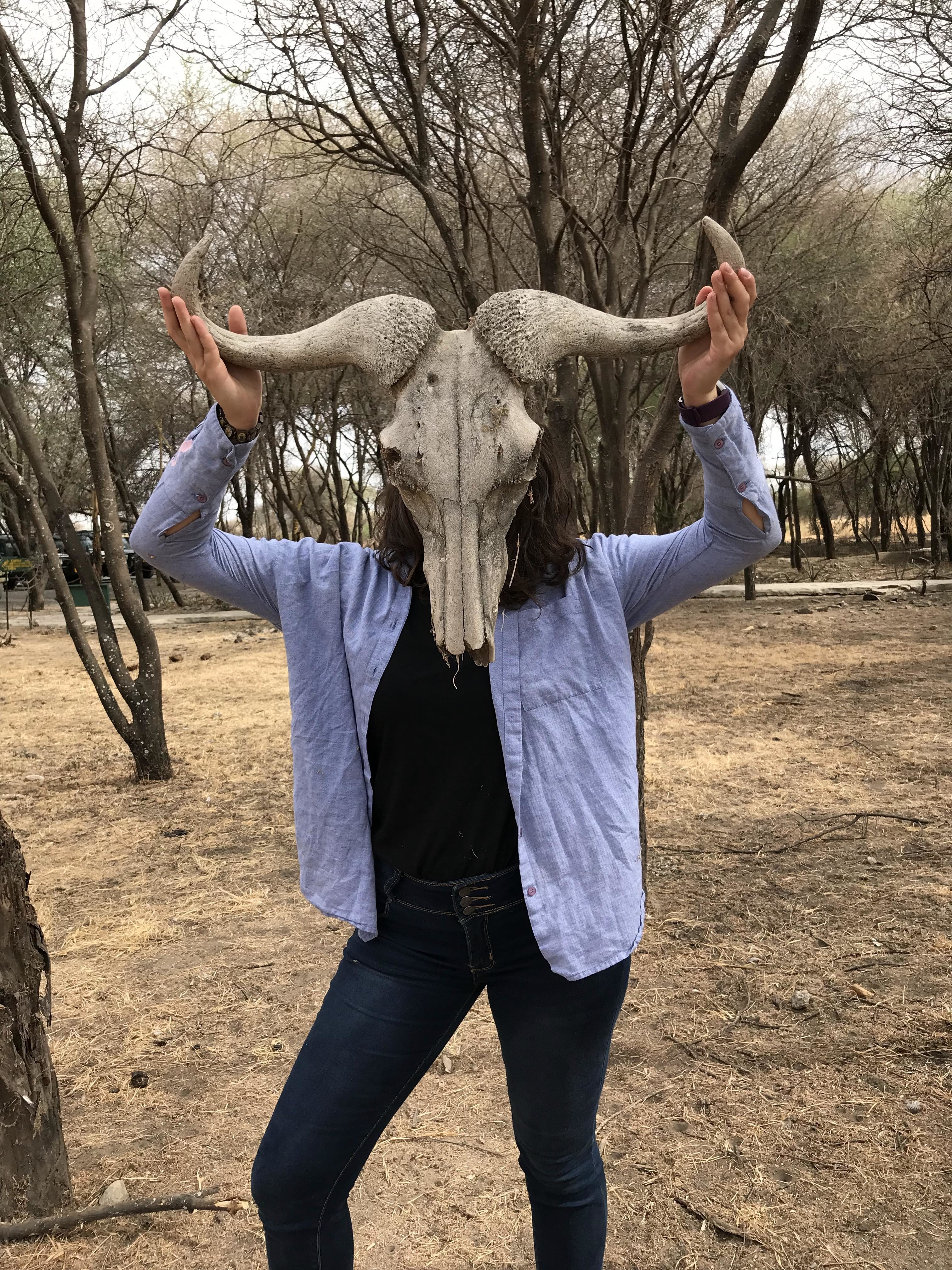 Me holding a wildebeest skull at the National Park
Me holding a wildebeest skull at the National Park
 You’re seeing what I saw through my binoculars. African Elephant (Tembo)
You’re seeing what I saw through my binoculars. African Elephant (Tembo)
 We were able to see a mom and its baby in their natural habitat
We were able to see a mom and its baby in their natural habitat
-fun fact: female elephants have a more sloped stomach than males. They also have a right angled head shape.
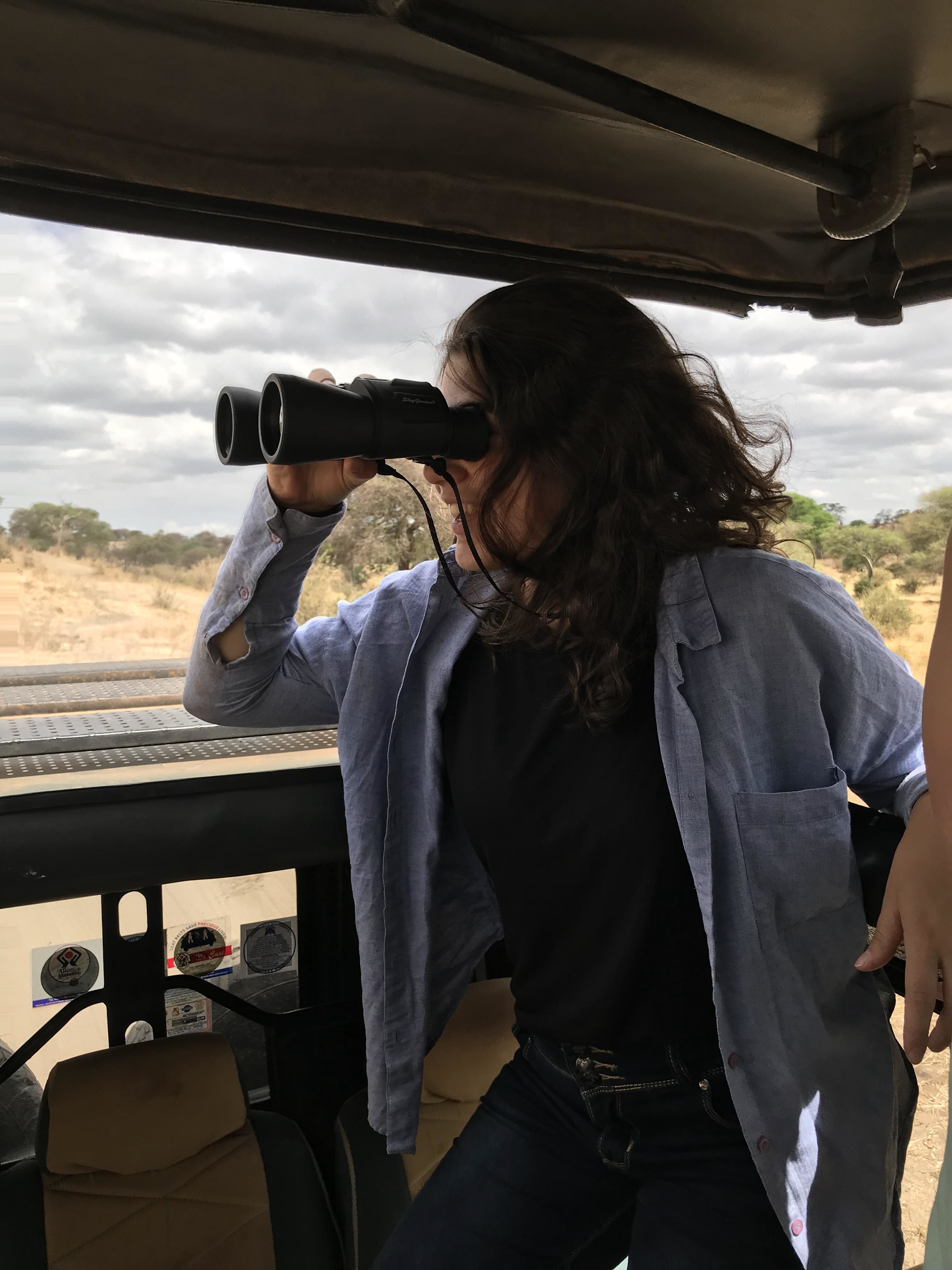 Spotting and counting animals in the national park for our research
Spotting and counting animals in the national park for our research
 So many plains zebras (pundamila) at Tarangire National Park
So many plains zebras (pundamila) at Tarangire National Park
 A male impala (swala pala)
A male impala (swala pala)
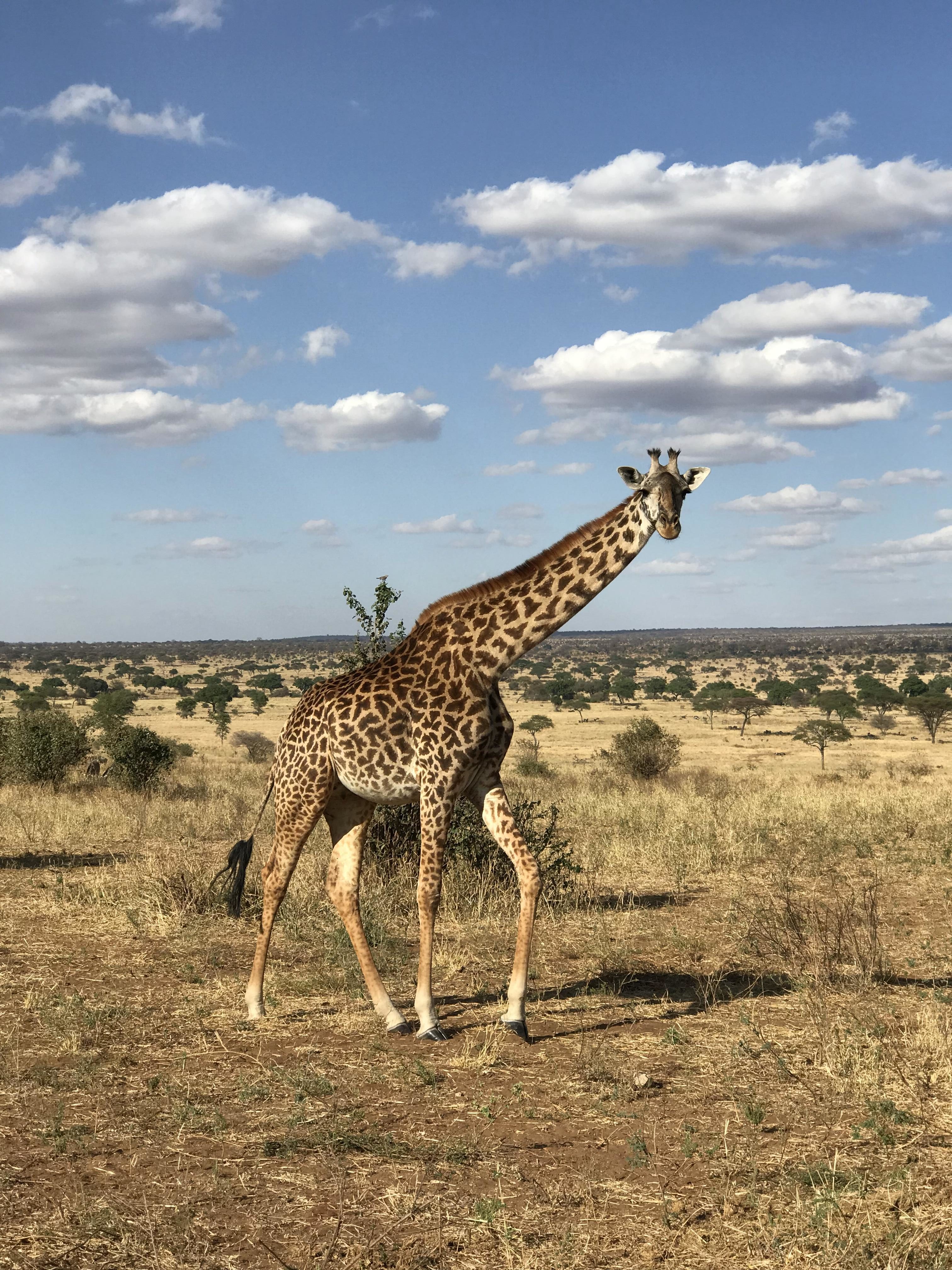 Maasai giraffe (twega) famous for their unique pattern
Maasai giraffe (twega) famous for their unique pattern
-fun fact you can tell that this a female giraffe because females are smaller and have horns covered with hair at the top
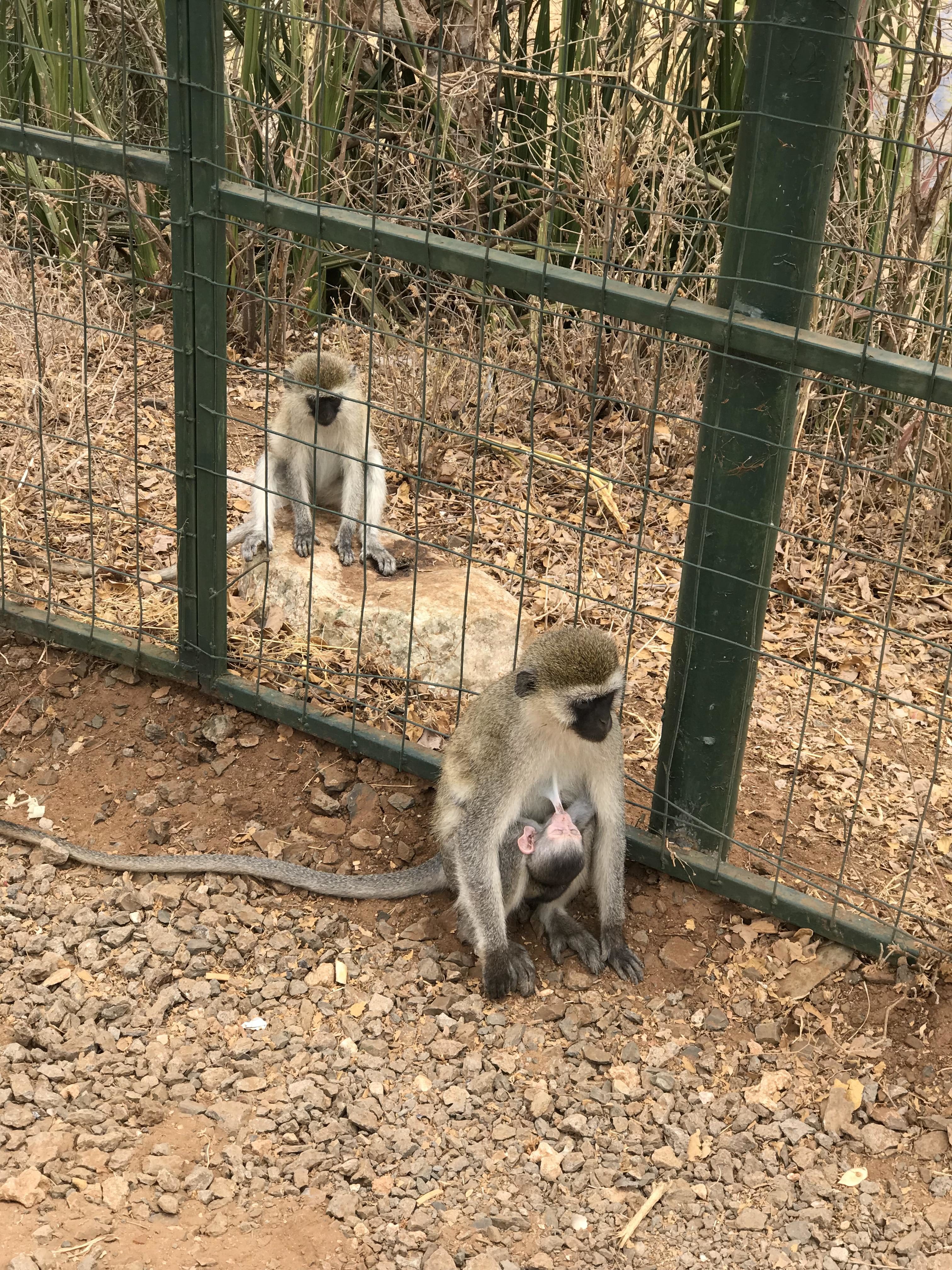 Vervet monkeys, mom feeding her cute baby
Vervet monkeys, mom feeding her cute baby
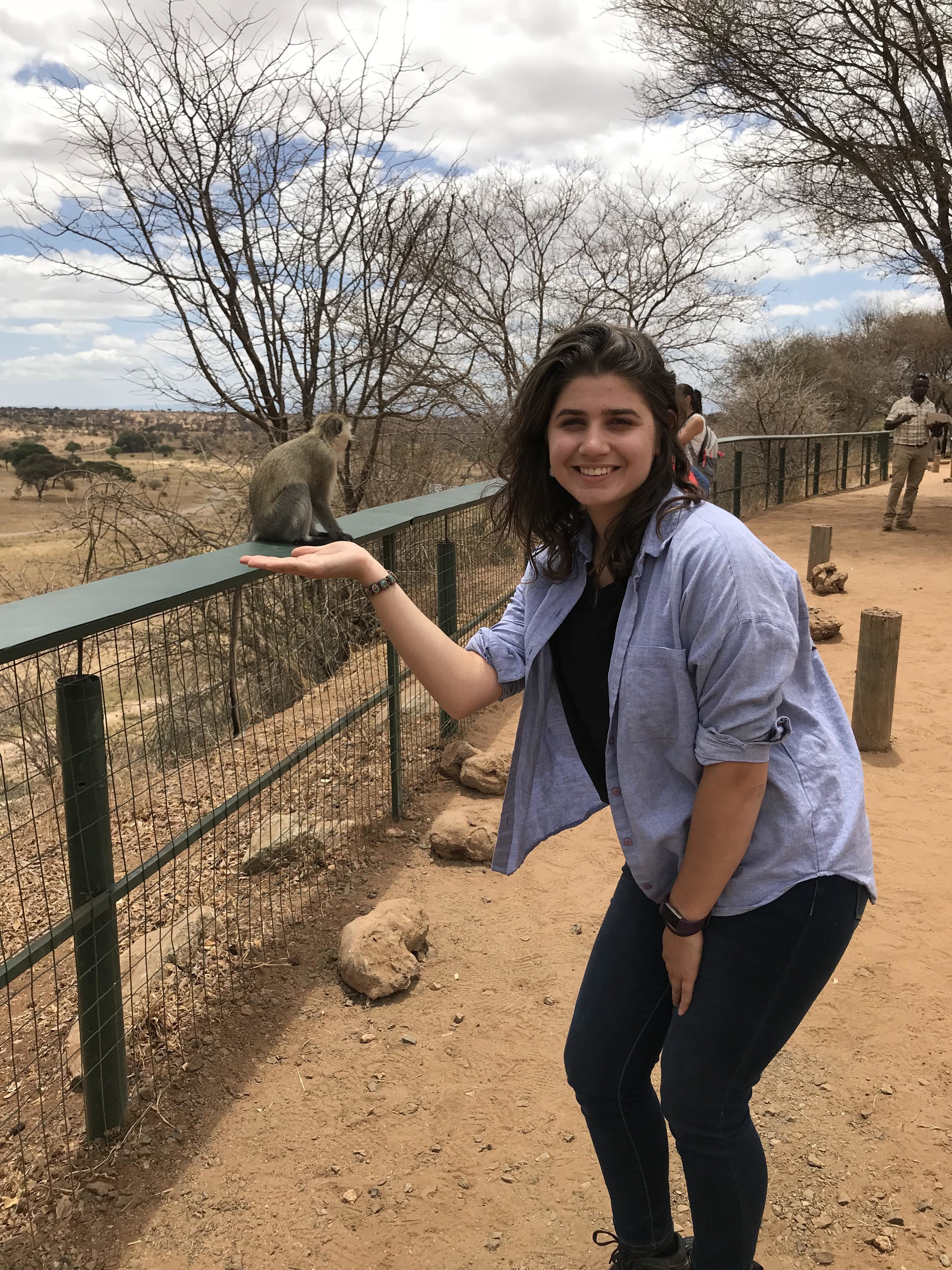 Our lunch break consisted of vervet monkeys stealing our food
Our lunch break consisted of vervet monkeys stealing our food
Day 2: Tarangire National Park safari and animal count transects AGAIN and guest speaker on lion research
The second day, we continued the transects of animal counts since the park is huge and to cover a lot of the area we need to do multiple transects a day.
For the second part of our day, we went outside the park to a research center where Dr. Kissui explained his research on lions. He focused on how they track them using GPS colors and how that helps in animal count and distribution studies on large carnivores. He mentioned the main limiting factors for his research was the price of such collars and the poaching occurring as lion retaliation along with bravery to the individual responsible for spearing that animal. A lot of conservation efforts are concentrated on these topics and there has been a reduction in such consequences but it is definitely still an issue among the Maasai community.
 We watched a lioness attempt to prey on an impala, AMAZING!
We watched a lioness attempt to prey on an impala, AMAZING!
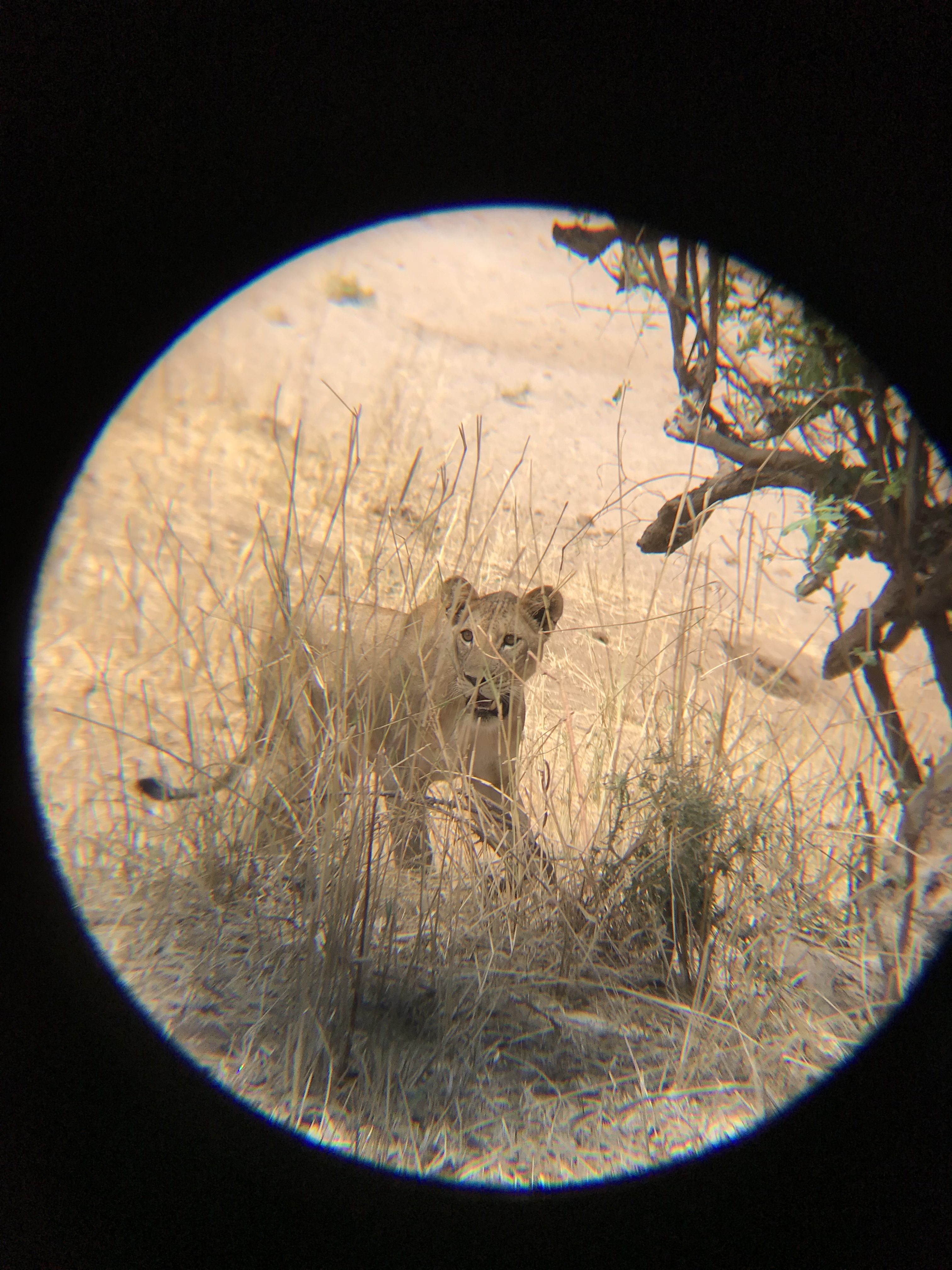 A closer look at this lioness
A closer look at this lioness
 We tried to take a selfie with the lioness in the back but we clearly failed at showing it
We tried to take a selfie with the lioness in the back but we clearly failed at showing it
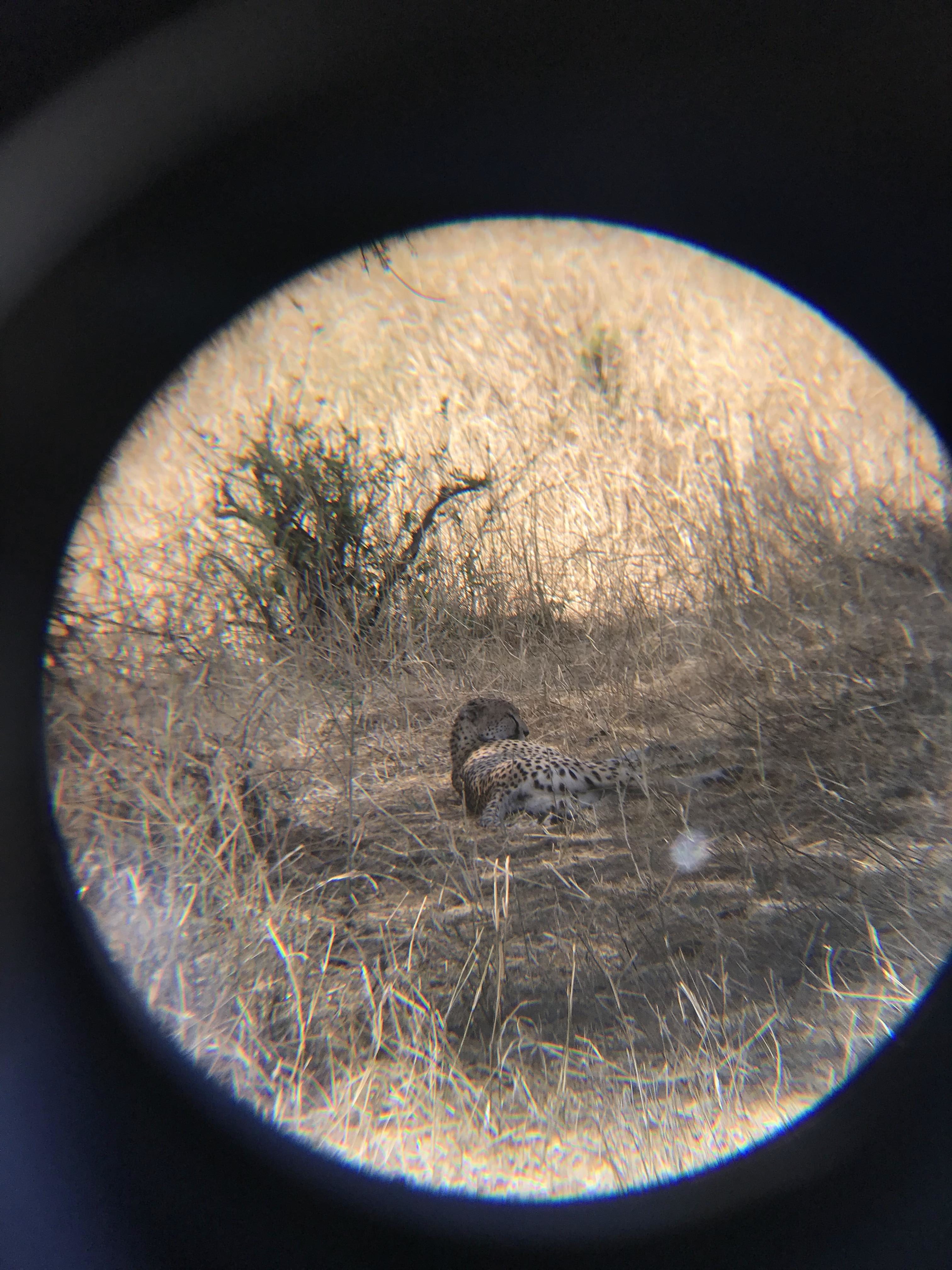
Cheetah (duma) taking a little nap
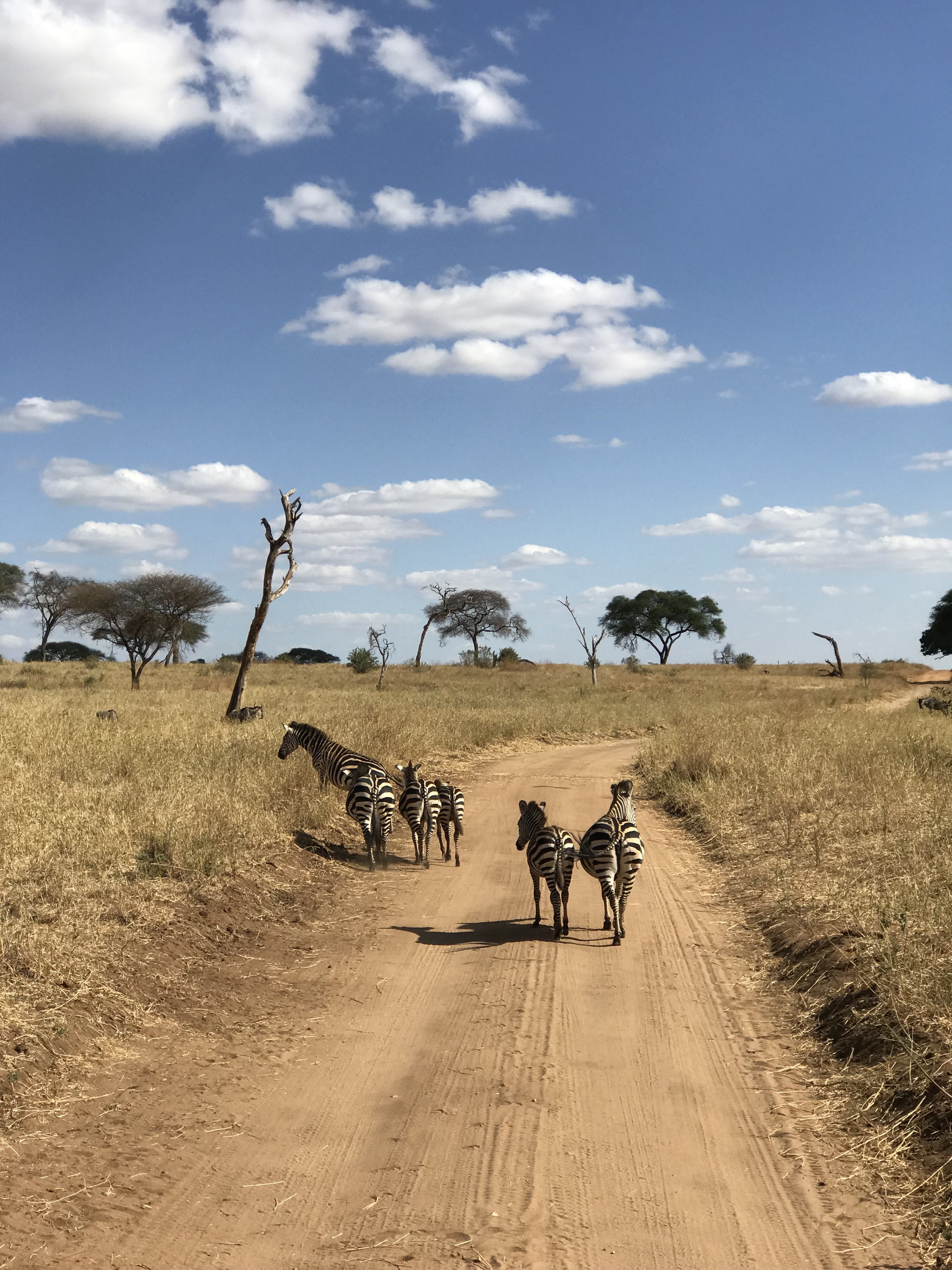 Some zebra traffic on the rode
Some zebra traffic on the rode
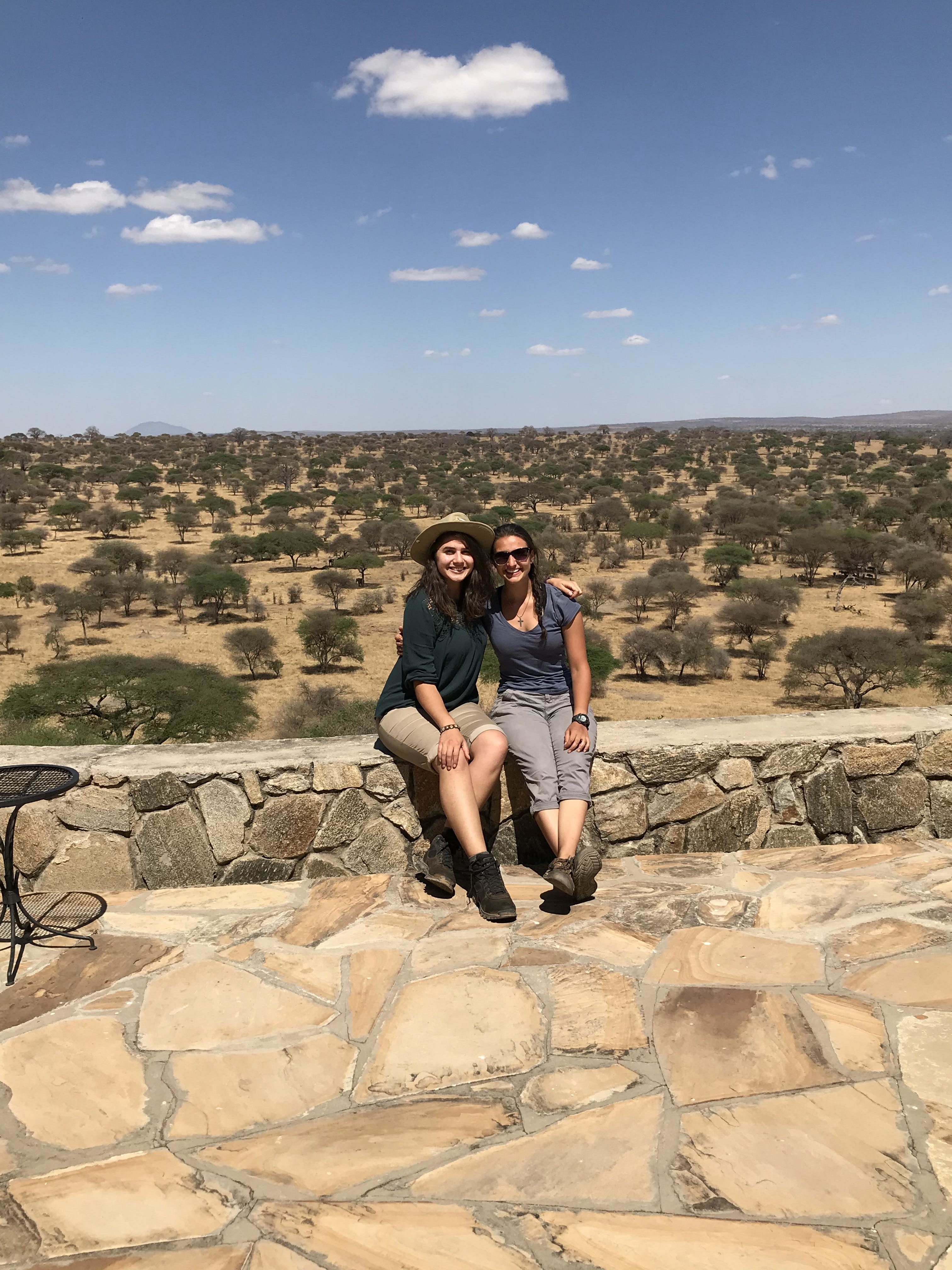 On the way back we stopped by the Tarangire National Park lodge before the guest lecture
On the way back we stopped by the Tarangire National Park lodge before the guest lecture
 Lions are identified based on their unique whisker spots
Lions are identified based on their unique whisker spots
Day 3: Understanding human-wildlife conflict
We talked to the park rangers about their practices to maintain wildlife conservation and management. In addition to how they deal with Maasai communities residing around the national parks, in addition to the poaching activities present in such protected areas.
We later interviewed Maasai community members that live in the wildlife corridors around the national parks to further understand the human-wildlife conflict. From what the local communities have told us, elephants were the biggest source of problems as they cause the most damage in such areas. This in turn, affects the livelihood of these people that are already financially unstable! These conflicts are not being resolved due to the governments availability to compensate for crop damage within a timely manner, as some individuals discussed how it may take up to two years to receive compensation. Thus, more conservation and management plans need to be further developed and tailored to benefit both the people and wildlife!
-sorry I did not take any pictures those activities but here’s a picture from that day at our camp site!
 Camp life was so much fun
Camp life was so much fun
Day 4: Manyara Ranch transect walks and animal count and LIONS!
The fourth day was absolutely amazing. First, we started with the animal counting transects, like the rest of the days but this was more intense since Manyara Ranch is a game reserve area that allows for livestock grazing. Therefore, there was a lot of cattle, goats, sheep, and donkeys to count that day. Regardless, it was a lot of fun!
Also, one of my highlights from this day was racing an ostrich run in full speed as he passed our car, that ostrich was going about 30-40 mphs, incredible!
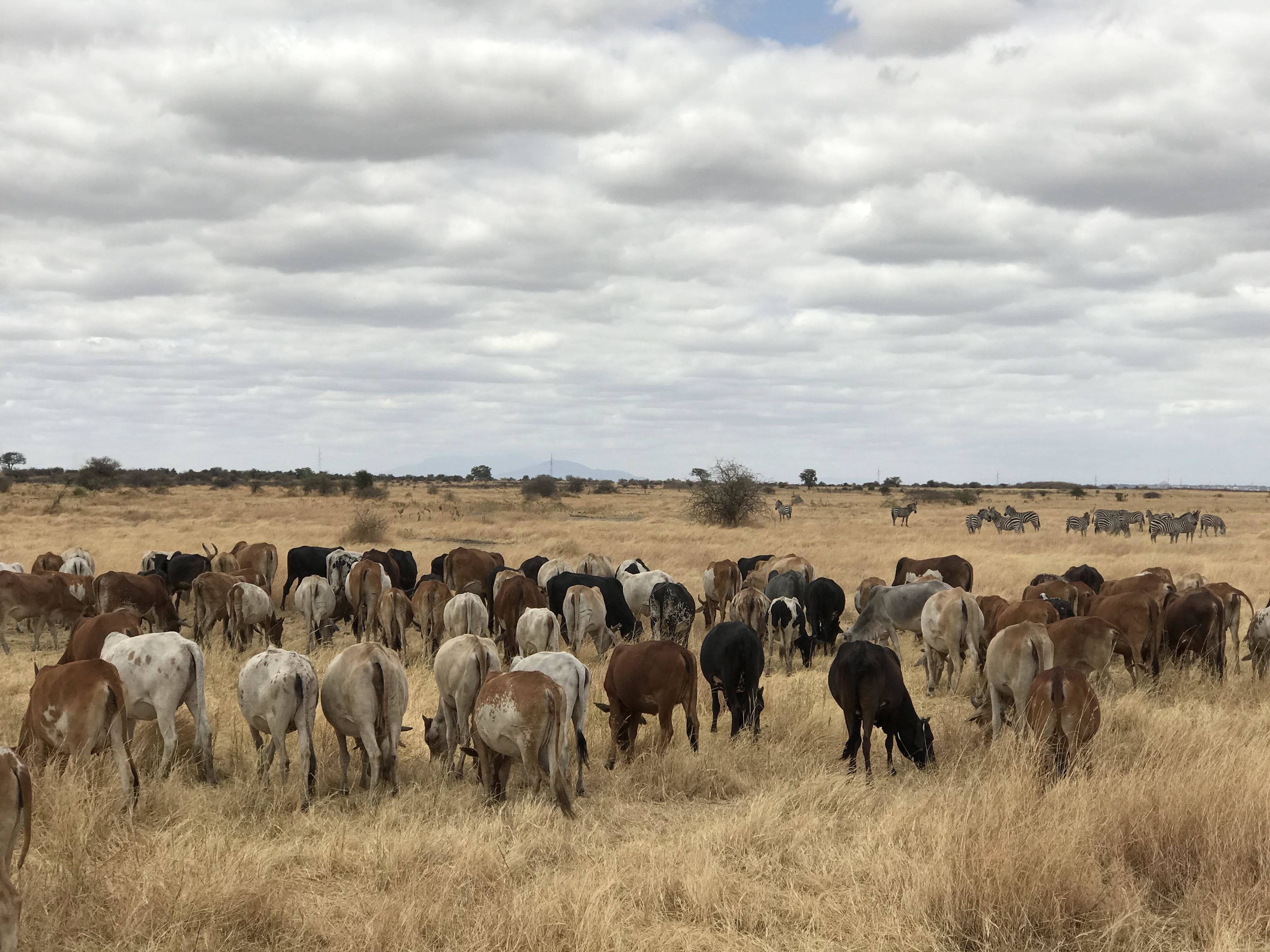 Hundreds of cattle to count
Hundreds of cattle to count
 The closest I’ve gotten to elephants so far
The closest I’ve gotten to elephants so far
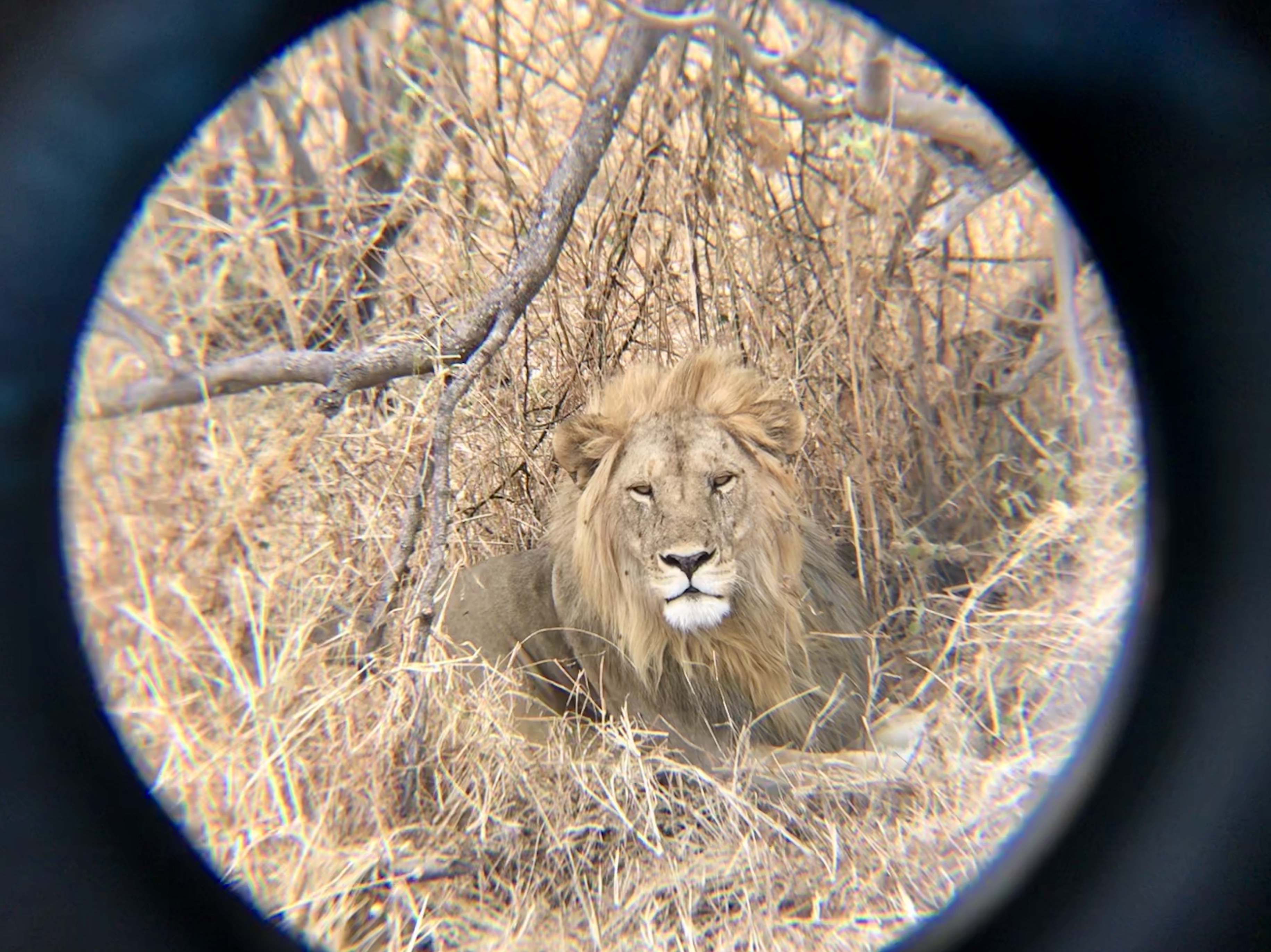 The beauty of this lion (simba) was unforgettable, favorite moment!
The beauty of this lion (simba) was unforgettable, favorite moment!
 The African lion enjoying the fresh air
The African lion enjoying the fresh air
Day 5: Background information on Manyara Ranch
On our last day, we discussed the vegetation and availability of natural resources in Manyara Ranch. Understanding the problems in these places will help improve wildlife conservation and management.
 Saying our last goodbyes to Manyara Ranch at the top of a mountain
Saying our last goodbyes to Manyara Ranch at the top of a mountain
I hope you enjoyed all the pictures!
Koheri (bye)!
